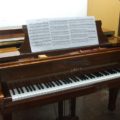A piano is not merely a musical instrument; it consists of various components, such as strings, a soundboard, a framework that supports string tension, and an intricate casing. Pianos are known for their durability, but they can be subject to wear and tear when used frequently. Issues may include missing keys, broken parts, or a dull finish, diminishing the instrument’s aesthetic appeal. Minor issues can be addressed through regular tuning, but it is advisable to have the piano fully restored when its condition deteriorates significantly.
Various types of pianos undergo restoration, such as upright, square, and grand pianos. These three models were the most commonly produced in the United States during the peak of piano manufacturing. Today, these pianos can still be found in educational institutions, churches, and homes.
The process of restoring a piano involves several steps, and many professionals possess the expertise to return the instrument to good condition. Piano restoration primarily involves two methods: reconditioning and rebuilding. Reconditioning entails cleaning, repairing, and adjusting the piano, with parts replaced as needed. This method is suitable for pianos with moderate wear and tear and those of average value.
Reconditioning does not involve the replacement of major components such as the soundboard, pinblock, bridges, or action parts. However, another approach called rebuilding involves complete disassembly, evaluation, and repair, if necessary. This includes replacing damaged components and repairing faulty sections. Unlike reconditioning, full rebuilding entails a thorough examination of the piano’s structure. Critical parts, including the soundboard, strings, pinblock, bridges, casing, and keyboard, are inspected and restored. This method is designed for high-quality instruments and requires more sophisticated and detailed work.
Restoring a piano typically takes about 1-2 months to complete, although the exact duration depends on the specific instrument. If the piano requires refinishing or the installation of major components for optimal quality, the process may take longer.
The best option for having your piano restored is to consult a reputable piano restoration company. They can assure you of top-quality restoration and exceptional service. The average cost of restoring a piano ranges from $3,000 to $5,000, covering basic restoration of internal components such as restringing, replacing hammers, tuning, and voicing. This restoration package is suitable for lower-quality pianos that need to be returned to their original state.
Manuel Marino is a seasoned Senior Producer, Music Composer, and Artist with over a decade of experience. He specializes in branded entertainment across various mediums, including video games, films, and advertising campaigns. With 20+ years as a game music composer, Manuel has worked on numerous platforms, creating diverse orchestral soundtracks. HIRE ME


 Manuel is a passionate, driven, and techsavvy AV technician,
Manuel is a passionate, driven, and techsavvy AV technician, 





